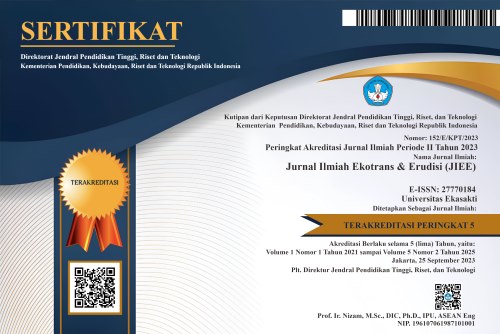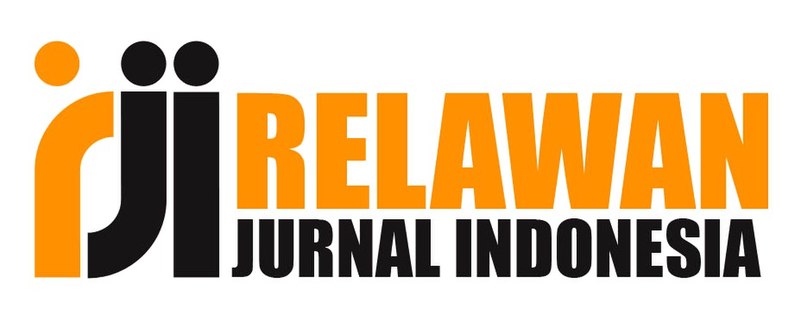Padang Panjang City Inspectorate Strategy in Handling Community Complaints and Aspirations Through the Guardian Reporting Service
DOI:
https://doi.org/10.69989/31vcpy29Keywords:
Strategy, Guardian Report, InspectorateAbstract
This research is motivated by the desire of the Padang Panjang City Government in realizing the achievement of the third mission of the city government which reads Improving responsive, innovative, and participatory governance. However, this will not be possible without joint efforts between the city government and the community, so that the government through the Padang Panjang Mayor Regulation Number 45 of 2020 concerning Guidelines for Management of Public Complaints Through Guardian Reporting Services in the Padang Panjang City Government, the Lapor Wali program was formed with the hope become a means of government in responding to the needs of conveying the aspirations of the people of Padang Panjang City. In this study, the theory used is strategy theory by Kotten. The method used is descriptive qualitative, with data collection techniques using interviews, documentation, and observation. The selection of informants was carried out using a purposive sampling technique. The results of this study conclude the strategy of the Padang Panjang Inspectorate in dealing with complaints and aspirations of the community through the guardian's report service has been carried out well although there are still some obstacles in handling it such as the inspectorate's communication with the related OPD is still not optimal.
Downloads
References
Bryson, J. M., Crosby, B. C., & ... (2014). Public value governance: Moving beyond traditional public administration and the new public management. Public Administration …. https://doi.org/10.1111/puar.12238
Caffarella, R. S., & Daffron, S. R. (2013). Planning programs for adult learners: A practical guide. John Wiley & Sons.
Ebrahim, A., Battilana, J., & Mair, J. (2014). The governance of social enterprises: Mission drift and accountability challenges in hybrid organizations. Research in Organizational Behavior, 34, 81–100. https://doi.org/10.1016/j.riob.2014.09.001
Engert, S., & Baumgartner, R. J. (2016). Corporate sustainability strategy–bridging the gap between formulation and implementation. Journal of Cleaner Production. https://doi.org/10.1016/j.jclepro.2015.11.094
Gagné, M. (2018). From strategy to action: Transforming organizational goals into organizational behavior. International Journal of Management Reviews, 20, S83–S104. https://doi.org/10.1111/ijmr.12159
Galpin, T., Whitttington, J. L., & Bell, G. (2015). Is your sustainability strategy sustainable? Creating a culture of sustainability. Corporate Governance. https://doi.org/10.1108/CG-01-2013-0004
Hananto, Y., & Lituhayu, D. (2018). Evaluasi Dampak Kebijakan Sistem Penyelenggaraan Pendidikan Inklusif jenjang SMP di Kota Pekalongan. Journal of Public Policy and Management Review, 7(2), 490–501. https://doi.org/10.14710/jppmr.v7i2.20207
Horng, J.-S., & Tsai, C.-T. (2012). Constructing indicators of culinary tourism strategy: An application of resource-based theory. Journal of Travel & Tourism Marketing, 29(8), 796–816. https://doi.org/10.1080/10548408.2012.730945
Innes, J. E., & Booher, D. E. (2004). Reframing public participation: strategies for the 21st century. Planning Theory & Practice, 5(4), 419–436. https://doi.org/10.1080/1464935042000293170
Ittner, C. D., & Larcker, D. F. (1997). Quality strategy, strategic control systems, and organizational performance. Accounting, Organizations and Society, 22(3–4), 293–314. https://doi.org/10.1016/S0361-3682(96)00035-9
Kalsi, N. S., & Kiran, R. (2015). A strategic framework for good governance through e-governance optimization: A case study of Punjab in India. Program, 49(2), 170–204. https://doi.org/10.1108/PROG-12-2013-0067
Kotler, P., & Armstrong, G. (2001). Principles of marketings. Prentice Hall Of India.
Lantos, G. P. (2001). The boundaries of strategic corporate social responsibility. Journal of Consumer Marketing, 18(7), 595–632. https://doi.org/10.1108/07363760110410281
Mesra, M., & Hariadi, B. (2023). Improving Service Quality Through the Performance of State Civil Apparatus in Sangir Batanghari District. Adabi: Journal of Public Administration and Business, 10(2), 1–12. https://doi.org/10.62066/jpab.v10i2.1
Osman, I. H., Anouze, A. L., Irani, Z., Lee, H., Medeni, T. D., & Weerakkody, V. (2019). A cognitive analytics management framework for the transformation of electronic government services from users’ perspective to create sustainable shared values. European Journal of Operational Research, 278(2), 514–532. https://doi.org/10.1016/j.ejor.2019.02.018
Pertusa‐Ortega, E. M., Molina‐Azorín, J. F., & Claver‐Cortés, E. (2010). Competitive strategy, structure and firm performance: A comparison of the resource‐based view and the contingency approach. Management Decision, 48(8), 1282–1303. https://doi.org/10.1108/00251741011076799
Poister, T. H. (2010). The future of strategic planning in the public sector: Linking strategic management and performance. Public Administration Review, 70, s246–s254. https://doi.org/10.1111/j.1540-6210.2010.02284.x
Rahmawati, L., Ati, N. U., & Suyeno, S. (2021). Efektivitas Pelayanan Publik Bidang Administrasi Kependudukan Di Masa Pandemi Covid-19 (Studi Kasus Pada Kelurahan Samaan Kecamatan Klojen Kota Malang). Respon Publik, 15(9), 14–21.
Wu, H.-Y. (2012). Constructing a strategy map for banking institutions with key performance indicators of the balanced scorecard. Evaluation and Program Planning, 35(3), 303–320. https://doi.org/10.1016/j.evalprogplan.2011.11.009
Downloads
Published
Issue
Section
License
Copyright (c) 2023 Muhammad Ajri Halim, Roni Ekha Putera, Kusdarini Kusdarini (Author)

This work is licensed under a Creative Commons Attribution-ShareAlike 4.0 International License.
Copyright Notice
An author who publishes in the journal "Jurnal Ilmiah Ekotrans & Erudisi" agrees to the following terms:
Author retains the copyright and grants the journal the right of first publication of the work simultaneously licensed under the Creative Commons Attribution-ShareAlike 4.0 License that allows others to share the work with an acknowledgement of the work's authorship and initial publication in this journal
Author is able to enter into separate, additional contractual arrangements for the non-exclusive distribution of the journal's published version of the work (e.g., post it to an institutional repository or publish it in a book) with the acknowledgement of its initial publication in this journal.
Author is permitted and encouraged to post his/her work online (e.g., in institutional repositories or on their website) prior to and during the submission process, as it can lead to productive exchanges, as well as earlier and greater citation of the published work (See The Effect of Open Access).
All materials in this site are protected by the law. It is prohibited to quote a part of or all of this website contents for commercial purposes without the permission or consent of the editors.
If anyone finds one article or more in this journal violate or potentially violate one’s copyrights, please report to us through e-mail of Principle Contact.
Legal-formal aspects of accessing any information and manuscript in this journal website refer to the provision of license Creative Commons Attribution-Share Alike (CC BY-SA). Read more about the Creative Commons Attribution-ShareAlike 4.0 Licence here: https://creativecommons.org/licenses/by-sa/4.0/.
All information available in 'Jurnal Ilmiah Ekotrans & Erudisi' is academic in nature. 'Jurnal Ilmiah Ekotrans & Erudisi' is not responsible for loss due to the abuse of information in the website.
Information
Notice about change in the copyright policy of the journal 'Jurnal Ilmiah Ekotrans & Erudisi' : "From Volume 1, Nomor 1 onwards the copyright of the article published in the journal 'Jurnal Ilmiah Ekotrans & Erudisi' will be retained by the author"
Privacy Statement
The names and email addresses entered in this journal site will be used exclusively for the stated purposes of this journal and will not be made available for any other purpose or to any other party.








































